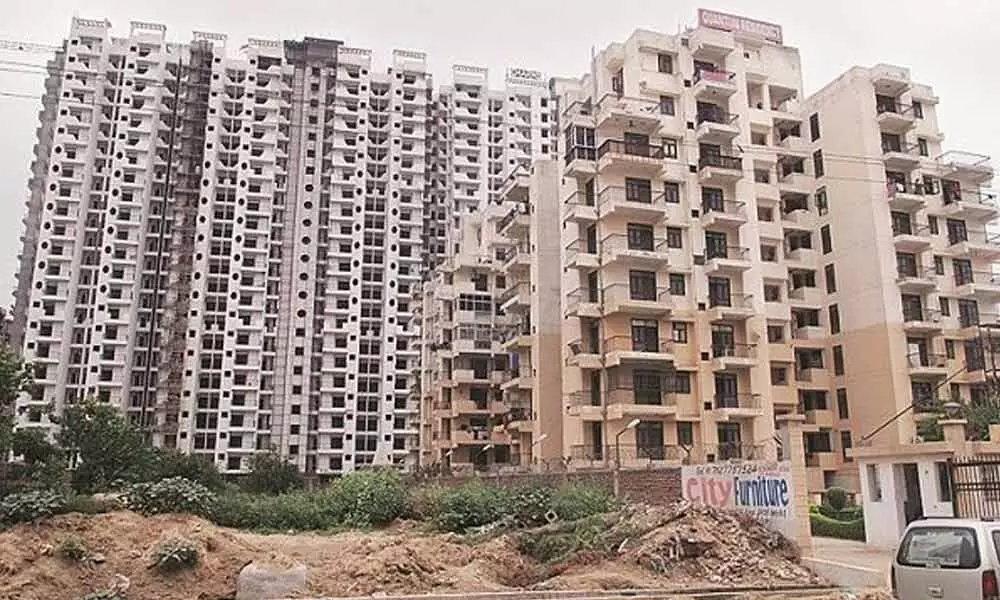Realty heading for holistic makeover post Covid-19

Realty heading for holistic makeover post Covid-19
The pandemic effect stimulates a revolution in the real estate industry with a focus on safety and wellness, against the backdrop of economic obscurity
Covid-19 spawned new trends with an increased focus on health and wellness and an increasing trend of investing in peripheral areas and tier 2 and 3 cities. The real estate industry shifted priorities and adopted the new norms to meet demands of the consumers. The emergence of the digital wave enabled the sector to stay afloat during the pandemic.
From site visits to registrations, everything is now being done online and developers are using innovative technological tools across various stages of business operations. With an absolute overhaul in the industry and probably some lasting changes in the way people live and work, the real estate sector in India will see the evolution of remarkable new trends in 2021.
Demand trends in residential sector
The suburban growth: With the continuing work from home trend, homebuyers are investing in spacious homes to continue having home offices and e-schooling. The desire for a better lifestyle, remote working culture, and reverse migration has led to an increased demand for homes in the peripheral areas and tier-2 cities. Homebuyers are looking at affordable homes that offers a secured community with loaded amenities. People want to invest in spacious gated communities, which include movie screening facilities, retail stores, etc. Basically, a self-sustained society that offers all essential facilities within itself.
Low home loan rates: In the last one year, RBI has lowered interest rates on home loans. This has encouraged previously uncertain consumers to explore opportunities in investing in a home. Home loan interest rates are currently at a record 15-year low. With this, the value of owning a home has been re-established, and is once again thought of as a secure and necessary investment. This trend is likely to continue throughout 2021.
Preference of close-to-ready inventory: There are various opportunities today in terms of close-to-completion projects or ready-to-move-in flats. This obliterates all sorts of market risk, hence proving a secure choice for the consumers. Consumers indulging in properties: The former 'walk-to-work' notion is no longer a factor in home-buying decisions today. Spacious and affordable properties in greener, less polluted areas are in demand, driven by work-from-home and e-schooling as well as security concerns. The need for space for work has influenced consumers into not settling for smaller homes. Buyers, today, are more inclined towards upgrading to larger houses with multiple usable spaces.
Demand trend in commercial sector
The new essentials - safety and wellness: According to a well-known research agency, the industry has revamped itself to meet the new protocol, to ensure customers feel safe – particularly at hotels, offices and retail. This shifted focus on personal safety will lead to new innovations in the industry offering services and advanced technology that provides cleaner buildings, improved HVAC facilities, sensors, and contactless entry.
Co-working workplaces: Companies with advanced digital inclinations saw success with remote work from home culture. However, few corporate tenants are set to look for spaces with innovative ways of collaboration and interaction, while complying with social distancing norms. As vaccinations proceed, hybrid workplaces are likely to surface as the next big thing globally, not just in India. The emergence of co-working spaces is likely to boost property values for projects encompassing them. According to an industry report, the share of co-working space in office leasing is going to rise in the near future, so much so that, every office structure, might have a section assigned for a co-working space. The ever-growing service industry has raised demand for office space, making it one of India's most important drivers of commercial real estate. The IT/ITeS sector is driving demand for office space. The IT sector in India is moving towards high-value segments like artificial intelligence, data analytics, and product development, which is driving up the demand.
Conclusion
There will be a fair recovery of the industry, buoyed by a combination of factors like pent-up demand, low-interest rates and a need for larger spaces, owing to continued work from home culture. According to a report by Knight Frank, Indian real estate attracted $5 billion institutional investments in 2020, equivalent to 93 per cent of transactions recorded in the previous year. Housing sales in seven cities increased by 29 per cent and new launches by 51 per cent in Q4 FY21 over Q4FY20. The real estate industry has always been an important player in contributing to the economy and GDP of the country. With the above changing trends looking positive, the future of the sector looks optimistic.
(The author is Managing Director of Salarpuria Sattva Group)















